Why the work of a late N.S. model maker has the Smithsonian's interest
Small, intricate models made of clay and wire, all delicately painted and decorated, are everywhere in Joan Coldwell's home.
Hundreds of them — flowers, birds, airplanes, soldiers and maids a-milking are nestled into cabinets and arranged on tables — each one crafted with patience by her late husband, David Coldwell.
"I think he loved what he did and he got to do it all his life," Joan said from her home in Gaspereau, N.S.
But in David's studio, hidden away in the basement, sits what is perhaps his most remarkable work.
It's a handmade model of the second USS San Jacinto, an American aircraft carrier that served in the Second World War.
Now, the model has become of interest to the Smithsonian National Air and Space Museum in Washington, D.C. A spokesperson told CBC they plan to have a look on a visit to Nova Scotia later this month.
If approved, the model would be used for an upcoming WW II exhibit.
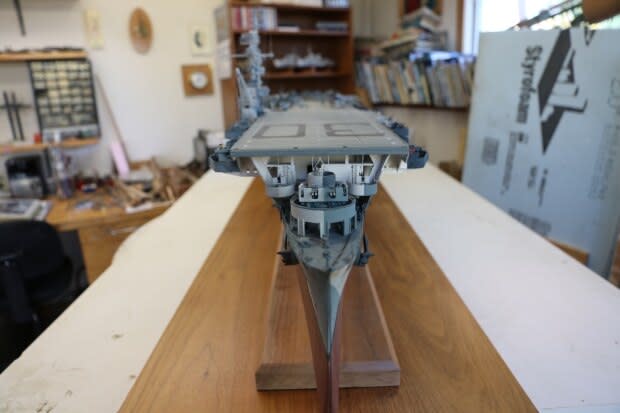
"It's quite exquisite," Joan said. "This aircraft carrier was really, really special to him. And he'd look at it and grin and just got so much pleasure from it."
David's son, Greg Coldwell, calls it "an incredible legacy."
"It's his masterpiece," he said. "He put so much time and effort into it.… And millions of people will get to see it."
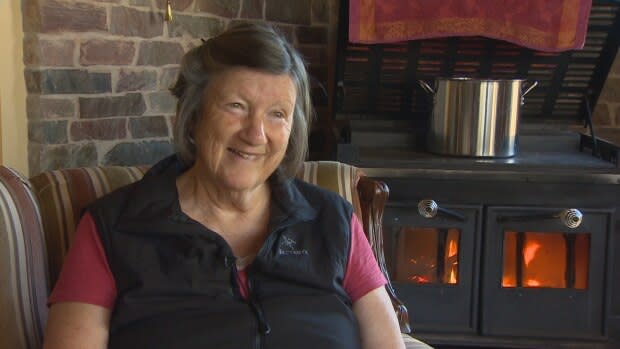
David grew up on his family's farm in Gaspereau. During WW II, he could see planes leaving the Greenwood air base about 50 kilometres away.
"I think the soldiers were awfully good to this little four-year-old boy. And he was just thrilled with World War II stuff and they'd take him in the Jeep," Joan Coldwell said.
He cut out pictures from Life magazines of different ships and played army tanks in the sand. Then, he began making models.
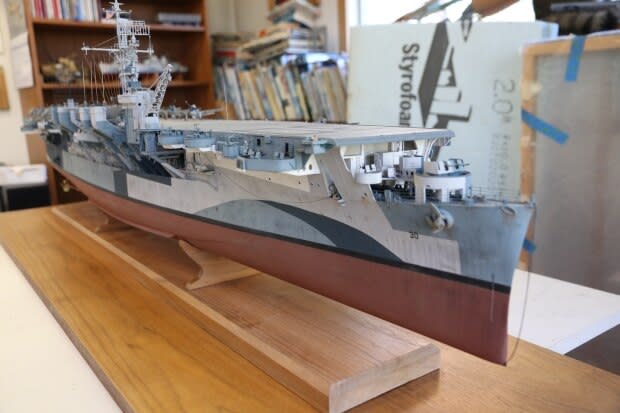
The summer after attending Acadia University, David got a job at the Nova Scotia Museum in Halifax as a model maker. He spent his entire career at the museum.
"He never looked back," his wife said.
In the summer of 2018, David died of heart failure. He was 80.
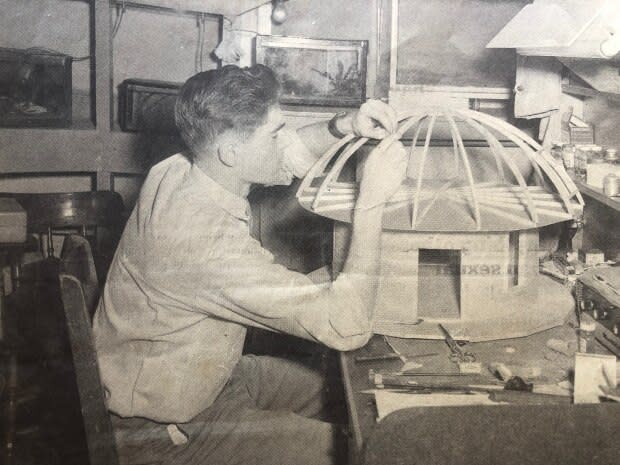
The Coldwell family estimates David made hundreds of models over the years. While Greg Coldwell says his favourite is the aircraft carrier, his stepmother, Joan, has a harder time picking just one.
"There's lots of favourites," she said. "I love the birds, I think he did a fantastic job of the birds. And every year he'd make something for Christmas.
She recalls that in their first decade of marriage, he made something from the 12 days of Christmas each year.
But her particular favourite, she said, will always be the lady's-slipper. It was the flower David stopped to show her on the way home from their first date.
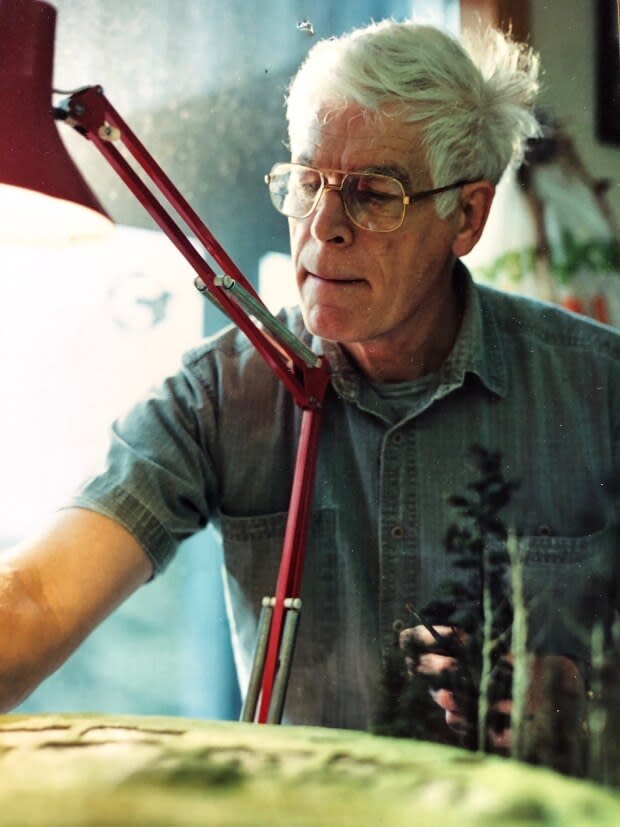
His son said he and his dad spent hours making models and building radio-controlled airplanes.
"If we were flying model airplanes, he was right there," Greg Coldwell said. "You name it, we did it."
But his father also taught him technique — how to work from plans and use colour.
It had a profound impact on his son's life. Greg is also a model maker.
It was Greg who reached out to the Smithsonian to see if it would have any interest in the USS San Jacinto.
"We wanted to do something to honour his memory," he said.
"Because it's an American aircraft carrier, we thought the States would be a good place to send it. I just happened to email the Smithsonian. And it was serendipity that they just said, 'It just so happens we're looking for an American carrier.'"
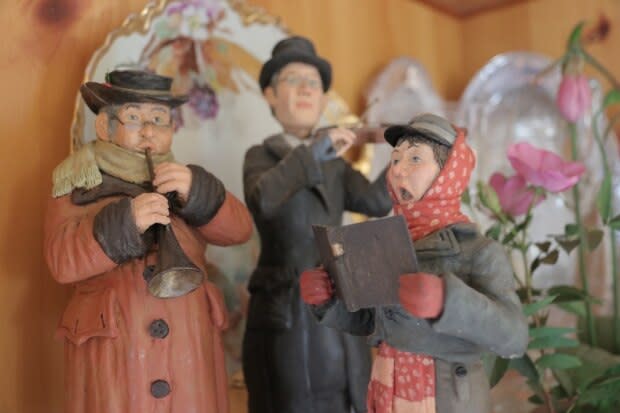
Former U.S. president George H.W. Bush served on the USS San Jacinto in WW II.
But the actual plans of the ship weren't easy for David to obtain. His son said if David built a section and then got new information, he would tear that section apart and rebuild it with the new details.
"It had to be perfect. That's probably why it took 10 years," he said.
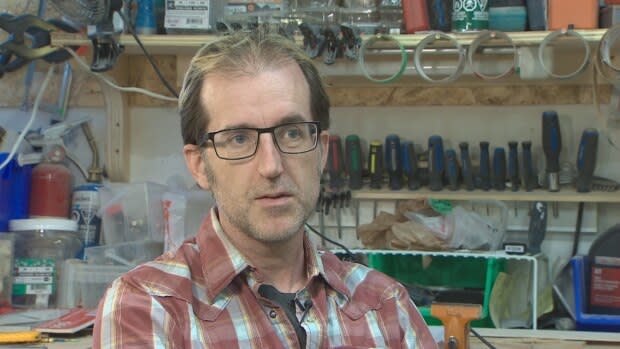
Joan said her husband didn't have a plan for what to do with the aircraft carrier while he was alive.
She said whenever they had a project to complete, like fixing the roof on the garage, David would offer to try to sell the model.
But it never happened. "He just couldn't part with it," she said.
She said she believes her husband would have been pleased that there was interest from the Smithsonian, although it wouldn't be his first work sent there.
In 2000, the Coldwell father-and-son team worked on a model of L'Anse aux Meadows, the first Viking settlement in North America, in Newfoundland. It was sent to the Natural History Museum at the Smithsonian.
Greg said he's been told the model is probably in storage now, but hasn't been able to track down its whereabouts.
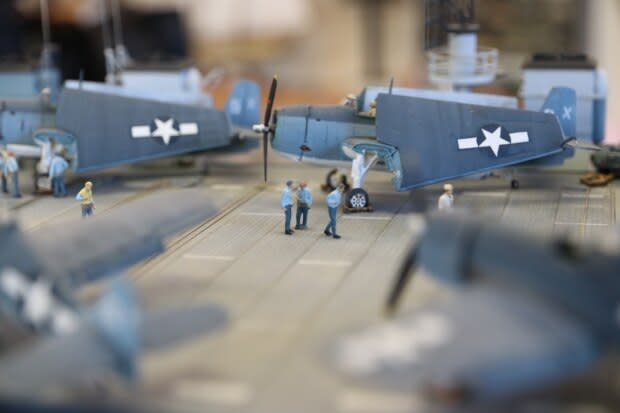
When it comes time to say goodbye to the aircraft carrier, Joan thinks it won't be easy.
"It was hard," she said, through tears, of the decision to donate the model.
But she's happy knowing more people will be able to enjoy it.
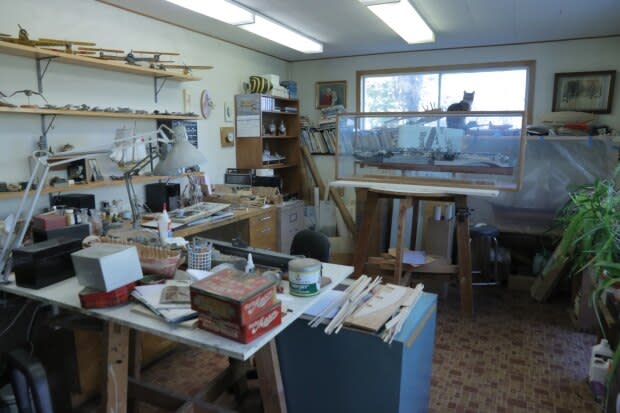
His son said he wants to remember his dad doing what he loved.
"He said to me one time that he was never gonna die. He was just going to disappear into one of his models," Greg said.
"So I like to think that he's somewhere on that aircraft carrier, probably sitting in the cockpit of one of the fighter planes getting ready to take off."
MORE TOP STORIES


